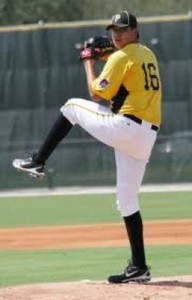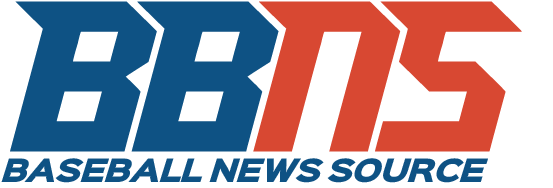 ESPN’s Keith Law recently released his list of the best farm systems in Major League Baseball (paywall), a list paced by the St. Louis Cardinals, Minnesota Twins and Tampa Bay Rays.
ESPN’s Keith Law recently released his list of the best farm systems in Major League Baseball (paywall), a list paced by the St. Louis Cardinals, Minnesota Twins and Tampa Bay Rays.
Ever the rebuilding franchise, the Pittsburgh Pirates ranked seventh on Law’s list of 30 teams (for those who aren’t paying ESPN for their service, like the author, PiratesProspects had the tip on the ranking).
Such an assessment is quite the departure for the franchise that had become a laugh-out-loud punchline for scouts and executive across the league. This was the club that spent years of near-first-overall picks on names like John VanBenschoten, Bryan Bullington and Daniel Moskos, citing affordability over talent.
How did the Pirates move from the developmental basement to possessing one of baseball’s best cupboards? Spending had plenty to do with it, as no team spent more on the Draft from 2008-2011 than the Pirates’ $48 million (of course, MLB took care of that little competitive advantage). Latin American scouting also improved markedly under the guidance of Bob Nutting and Rene Gayo, and the team has begun molding its own draft picks (Andrew McCutchen, Neil Walker) into everyday MLB players, the hoka hey! scrap notwithstanding.
It’s from their high draft selections and Latin American scouting that the Pirates are currently drawing the most promise.
In addition to organizational rankings, Law also ranked the top 100 prospects in baseball—again, it’s behind a paywall, and again, the blessed gift of Twitter gives a glimpse at the Pirates’ work in the standings.
As tweeted by Ed Giles, the Pirates have five of the top 100 MLB prospects in Law’s list, including Gerrit Cole (8th overall), Jameson Taillon (20th), Alen Hanson (34th), Gregory Polanco (55th) and Luis Heredia (84th).
The Pirates loaded up on pitching in consecutive years, selecting blue chip arms in Taillon, Cole and Mark Appel (who went unsigned under advisor Scott Boras and the new MLB draft slotting system) from 2010-2012. It’s no surprise that Taillon (second-overall, 2010) and Cole (first-overall, 2011) top the list. However, Heredia (Mexico), along with Hanson and Polanco (Dominican Republic) are all products of Gayo’s Latin American scouting group, and all three made giant strides in 2012.
While the Pirates should begin to see some of their young pitchers reach the show in 2013 (headlined by an anticipated midseason call-up for Cole), positional players Hanson and Polanco are welcome sights for the Pirates, a thin team in the infield and the batter’s box.
 Cole is the closest to being Major League-ready after reaching AAA Indianapolis late last season. By many projections, Cole could reach the Pirates in a starting or relief role by June or July. He’s been invited to attend MLB Spring Training with the Pirates, but is still a longshot to make the Opening Day roster.
Cole is the closest to being Major League-ready after reaching AAA Indianapolis late last season. By many projections, Cole could reach the Pirates in a starting or relief role by June or July. He’s been invited to attend MLB Spring Training with the Pirates, but is still a longshot to make the Opening Day roster.
Like Cole, Taillon is progressing through the system and should be Major League ready in a season or two. Taillon is younger than Cole at 21, having been drafted right out of high school, but is expected to begin the year in AA Altoona.
After making impressions last season in low developmental leagues, Hanson and Polanco are set to make the next big steps in their development. According to Pirates Prospects, Hanson and Polanco should begin the season with Bradenton, while Polanco potentially landing with AA Altoona before the end of the year.
 At 18, Heredia is the youngest of the Pirates’ blue-chip prospects. He is still very raw, which is to be expected at his age, but at 6’6″ he has the build to become a power pitcher, and should make the jump to the Gulf Coast League in 2013.
At 18, Heredia is the youngest of the Pirates’ blue-chip prospects. He is still very raw, which is to be expected at his age, but at 6’6″ he has the build to become a power pitcher, and should make the jump to the Gulf Coast League in 2013.
For all the decades of faux-rebuilding, it took GM Neal Huntington and his staff five years to turn the farm system into a quality cupboard of plus-potential players.
As a low-payroll team in a small market like Pittsburgh, the Pirates will need to see their farm system begin paying dividends if they hope to make the jump from doormat to contender.
